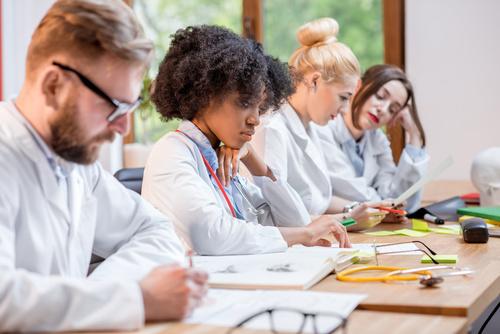 The stigma that comes with not finishing studies on time may cause stress amongst medical students and result in incompetency.
The stigma that comes with not finishing studies on time may cause stress amongst medical students and result in incompetency.A simulation training for plastic surgery is effective in improving the skills and perceptions among undergraduate medical students, a recent study reports.
The researchers enrolled 47 undergraduates (64 percent female), of whom majority (72 percent; n=34) were in the latter years of their medical training. Outcomes included improvements in the participants’ skills, as well as their overall interest in the plastic surgery specialty, as measured by post-course surveys accomplished immediately after and 6 weeks after the course.
At baseline, participants scored a pre-course performance rating of 55.9 percent. This jumped to 75.8 percent after the simulation course, corresponding to a significant 19.9-percent improvement in performance (p<0.01).
Assessment done 6 weeks after the course showed that performance had dipped slightly to 67.3 percent, though this still represented a significant 11.4-percent improvement (p<0.01). Suturing likewise improved significantly by 61 percent (p<0.01) relative to pre-workshop performance levels.
Notably, the simulation course resulted in greater interest in plastic surgery. Pre-course interest measured by the modified Likert scale was 3.26 points. This grew by 12 percent to 3.89 after the programme (p<0.01). At the 6-week assessment, the Likert score remained high at 3.66, an 8-percent increase relative to baseline, suggesting sustained interest in the field.
“[T]his paper demonstrates that through lectures and simulation workshops, there is a significant increase in both the knowledge, and the interest in plastic surgery as a specialty,” said researchers.
In the present study, medical students attended a course on plastic surgery including lectures of common clinical topics, possible career topics and practical workshops. This involved a series of stations for different applications, such as suturing, performing excisions and closing wounds.